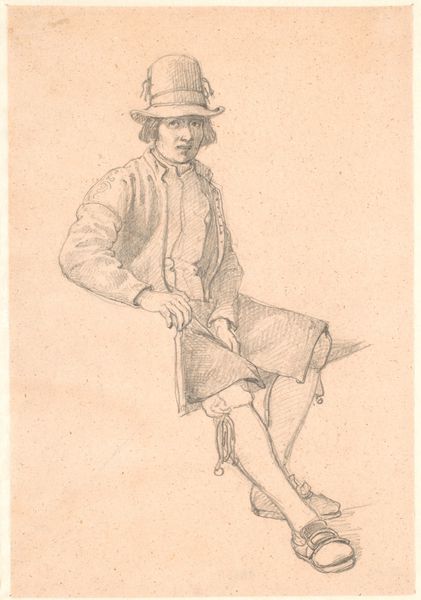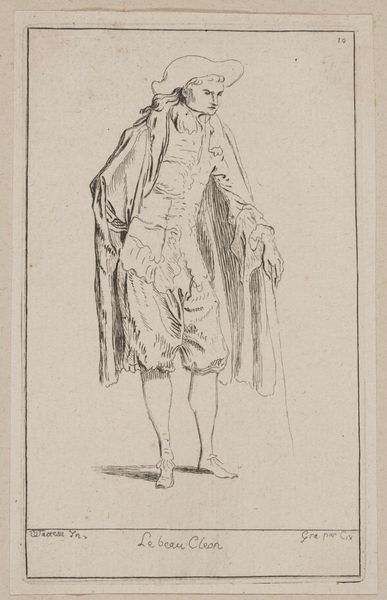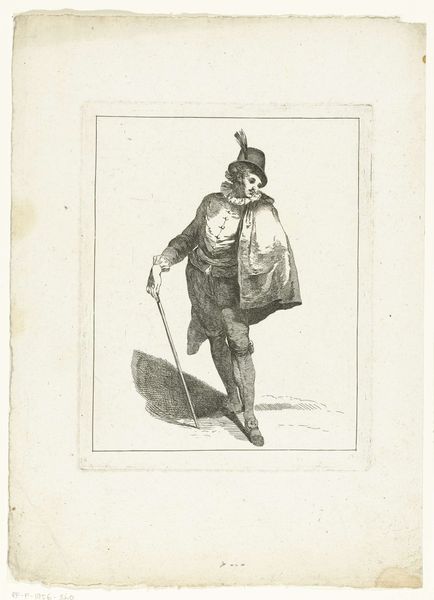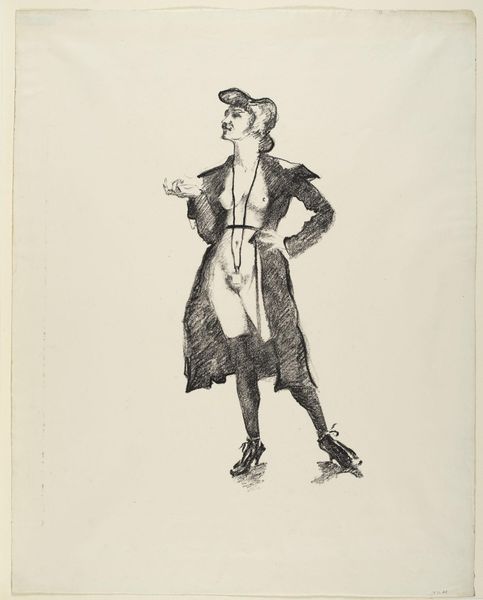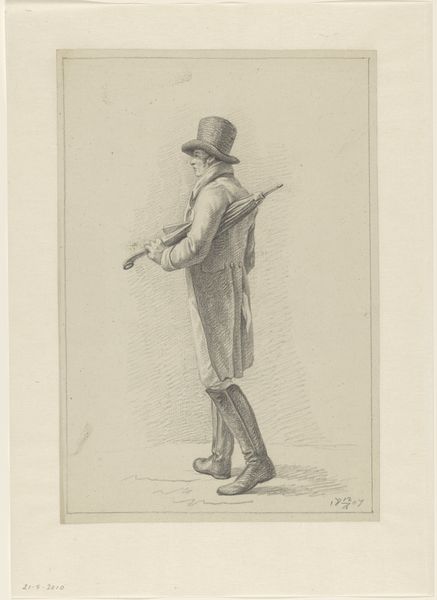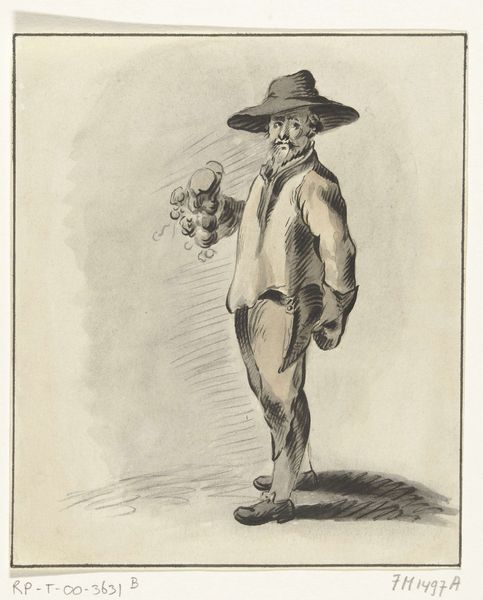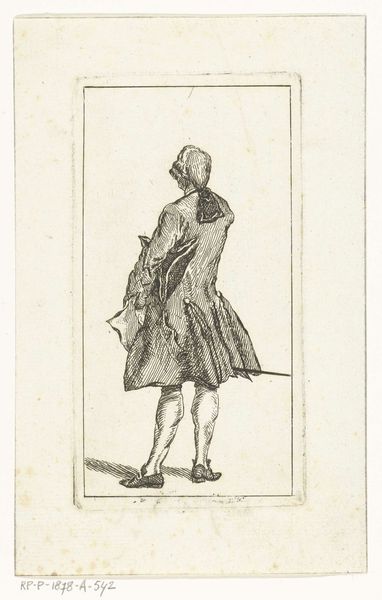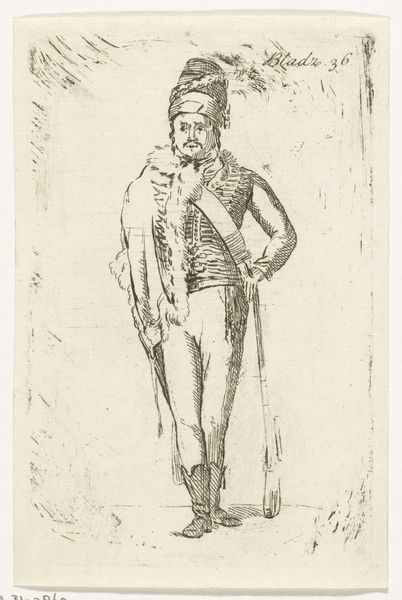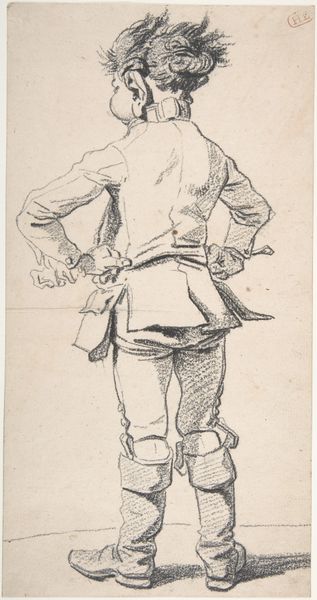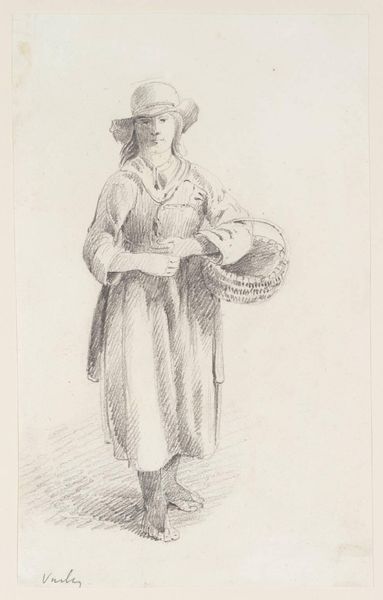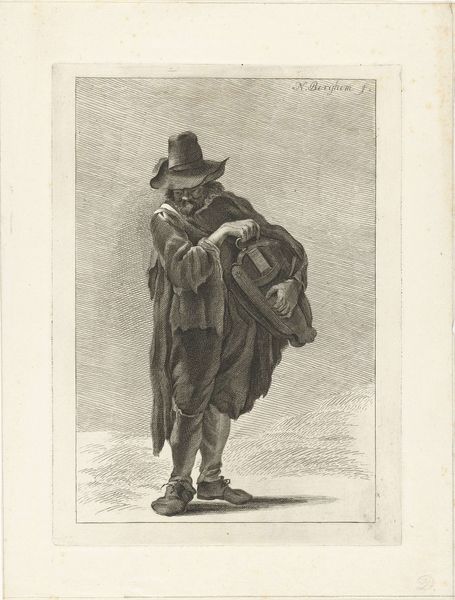
drawing, ink, pen
#
portrait
#
drawing
#
comic strip sketch
#
imaginative character sketch
#
caricature
#
caricature
#
cartoon sketch
#
figuration
#
personal sketchbook
#
ink
#
idea generation sketch
#
ink drawing experimentation
#
pen-ink sketch
#
sketchbook drawing
#
pen
#
storyboard and sketchbook work
Dimensions: height 180 mm, width 136 mm
Copyright: Rijks Museum: Open Domain
Editor: Here we have a pen and ink drawing entitled "Henricus Slatius, 1623" attributed to J.C. Wendel, though created much later, sometime between 1850 and 1870. It’s at the Rijksmuseum. It looks like a caricature; the figure has an almost comical, defiant air. What do you see in this piece? Curator: Beyond the humor, I see a powerful critique embedded within this caricature. Given the subject is Henricus Slatius, a historical figure executed for treason, this image invites us to consider how power constructs narratives and punishes dissent. Wendel, by exaggerating Slatius' features, might be challenging the official historical account. Editor: That’s interesting! I hadn’t thought about it as challenging power. So you think it’s about more than just making fun? Curator: Precisely. Caricature, especially when dealing with historical figures, can become a form of political commentary. Think about how the artist uses line and shadow – does it amplify Slatius' perceived transgressions, or does it evoke empathy? How does it contribute to our understanding of justice, then and now? Editor: I see what you mean. The heavy shading almost makes him seem menacing, but the hat and overall style softens that impression. It's complex. Does knowing more about J.C. Wendel give us more insight? Curator: It would. Researching Wendel's other works, his social circles, and the political climate of the mid-19th century could reveal motivations and provide deeper context for understanding his perspective. Did Wendel identify with marginalized communities, express similar sentiments in his other works? What does that say about the work, or society at large? Editor: I never thought I could analyze something humorous through such serious lenses. It makes me realize how much art can speak to power, resistance, and identity. Curator: Exactly! Even seeming frivolity can carry profound socio-political meaning, urging us to examine whose stories get told and how. That's where art history meets activism, offering potent tools for re-evaluating our world.
Comments
No comments
Be the first to comment and join the conversation on the ultimate creative platform.
